A spectacular woman
BPA, Cologne
23 April - 23 May 2021
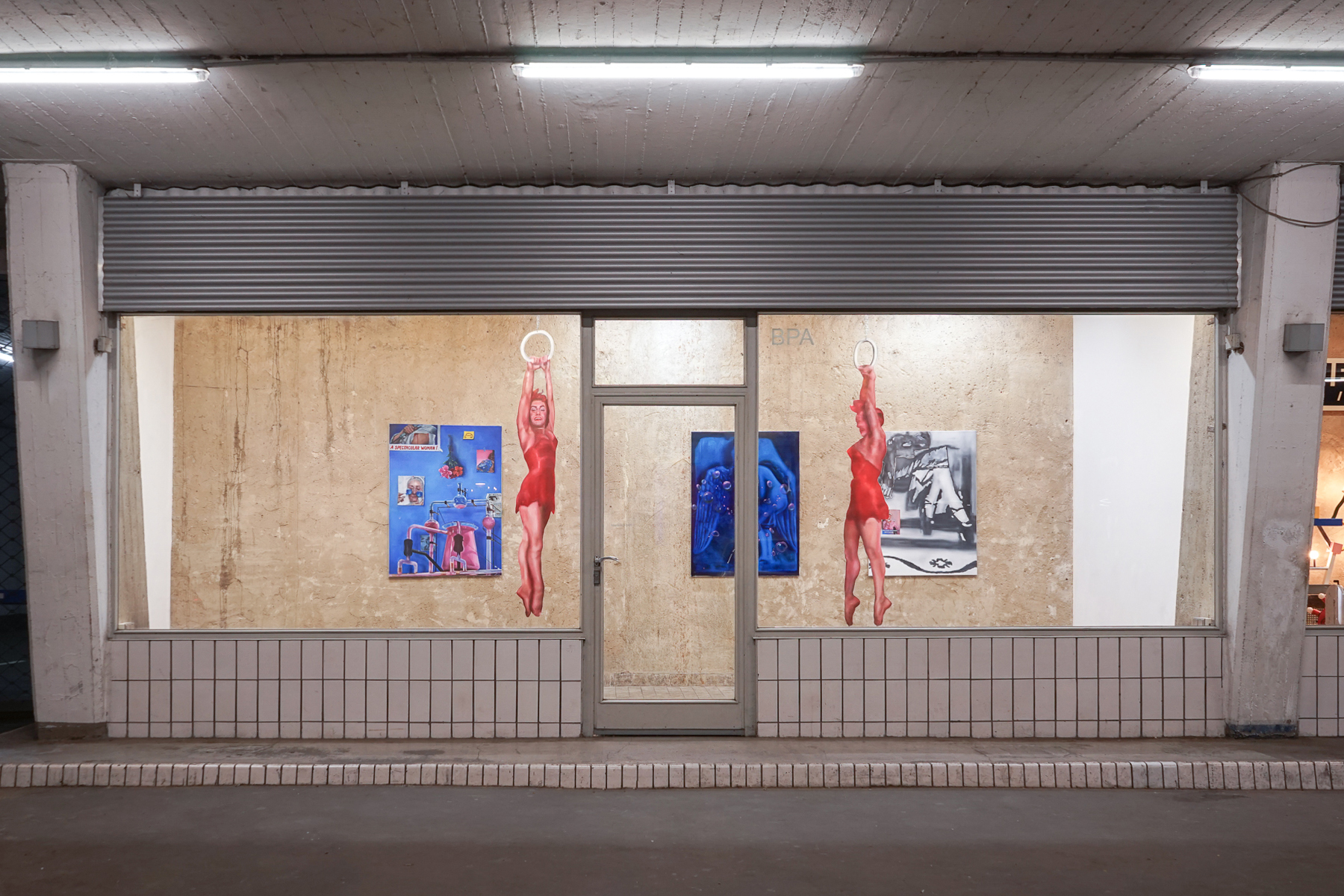
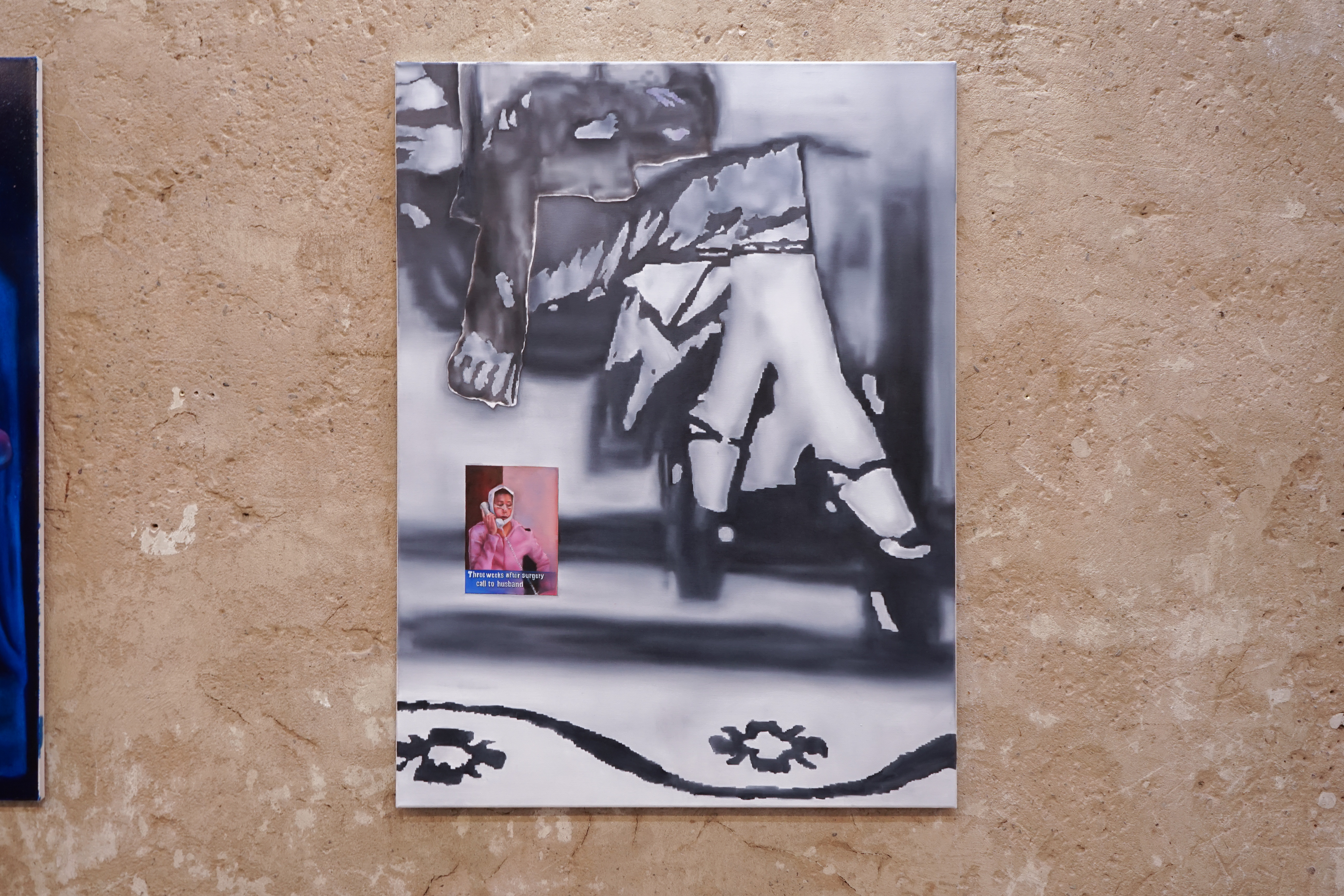
Miss swan, Oil on canvas, 130x90cm
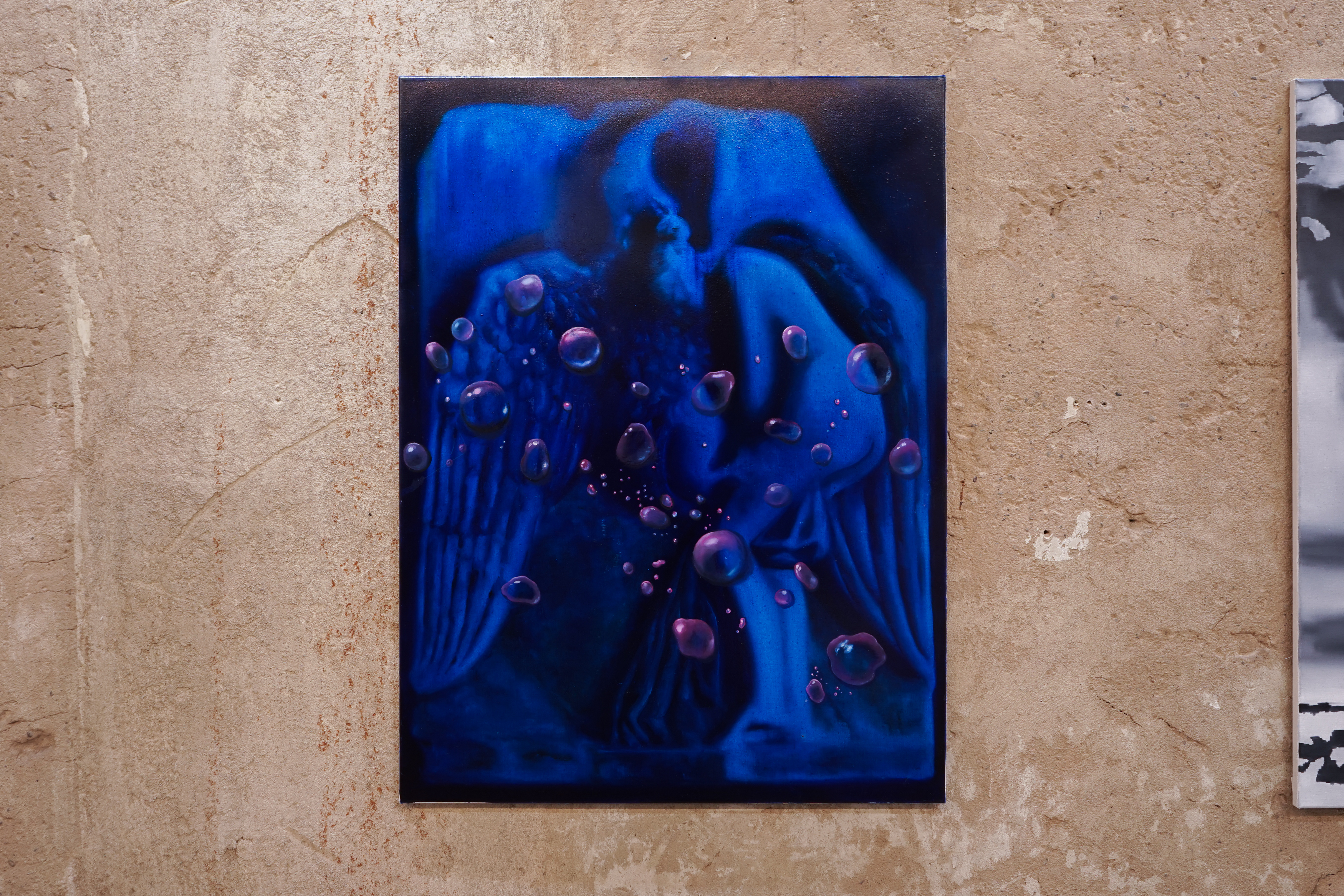
Leda, Oil on canvas, 130x90cm

House of wax, Oil on canvas, 130x90cm
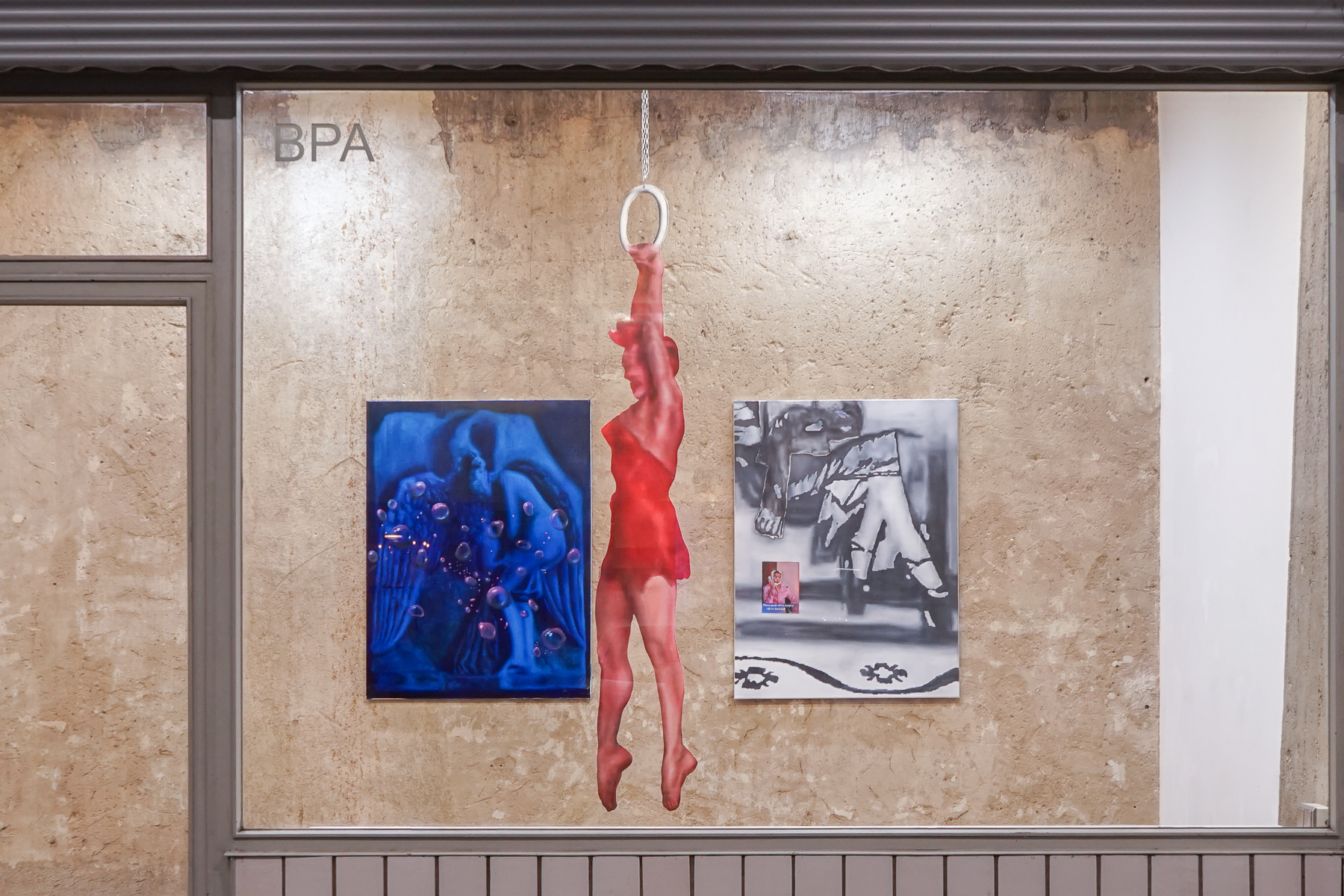
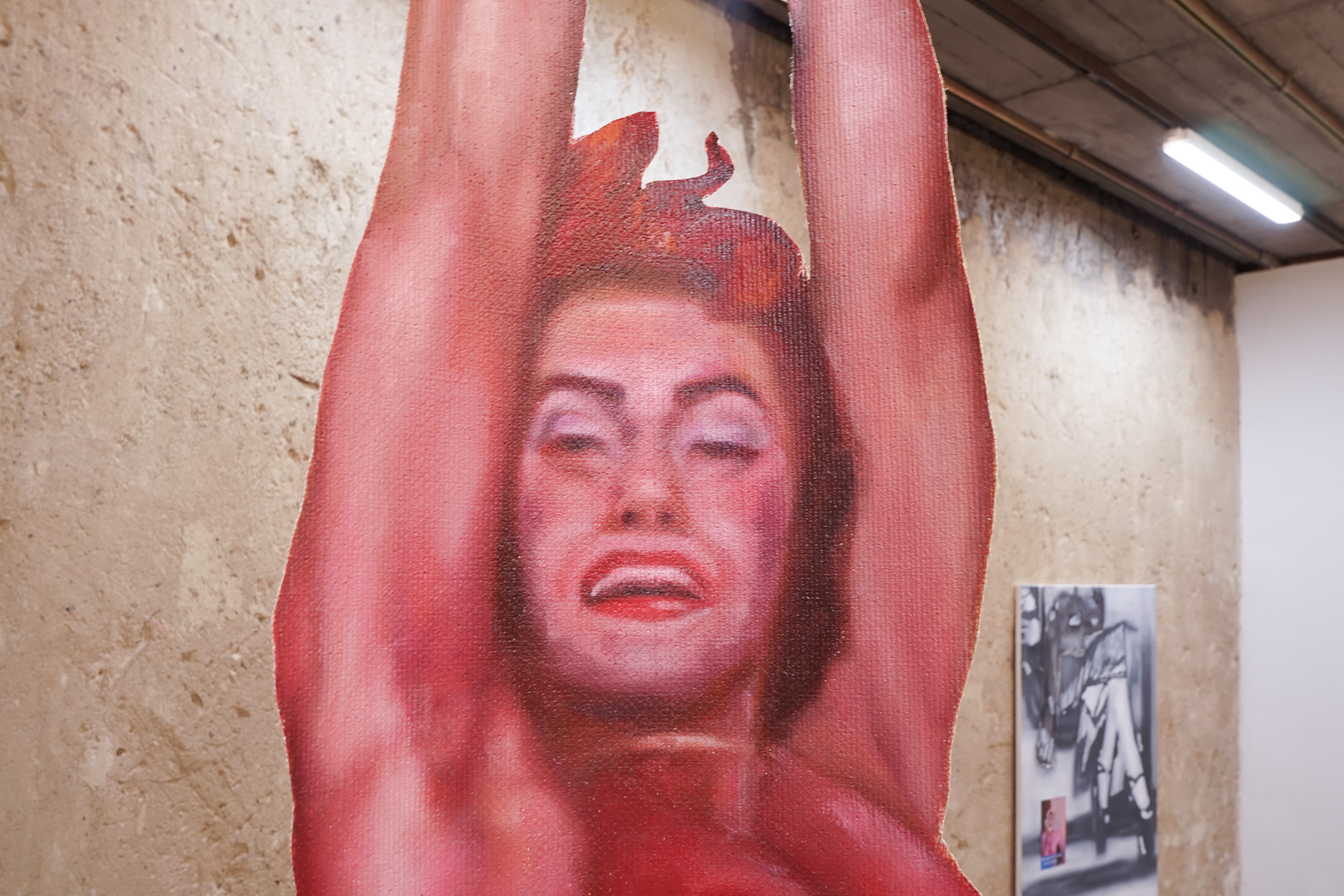
A Twisted Kind of Peepshow
Looking at Annabelle Agbo Godeau’s latest work through the glass front of the BPA space is like watching a twisted kind of peepshow. Two athletic performers in short red dresses descend from the ceiling into what appears to be a mise-en-scène of femininity. Instead of one-way mirrors, behind which usually other anonymous spectators would linger, a triptych establishes the scenography of the show. With a bright smile, beaming at you through heavy makeup, you are invited to stay and watch.
Both performers quickly confirm every suspicion of their fraudulence, as they turn out to be just cut-outs from a painted piece of canvas. Their resemblance is more akin to cinematic and theatrical scenographies or so-called 'paper peepshows' from the 19th century, rather than fleshed-out acrobats. Or maybe they are placeholders, waiting for the actual performers to return and resume the show.
Instead, the spectacle further unfolds within the paintings on the wall. They are compositions of images Agbo Godeau collects from archival material, such as erotic magazines and pornographic films from the 1940s to 90s, and the internet. By extracting them from their original context, they are rendered ambiguous and cross-referential. The trompe-l'œil adhesive strips and pins, which loosely attach the different snippets to the blue wall, suggest the impermanence of their meaning as do the water droplets resting on the surface of the painting.
Judith Butler used Simone de Beauvoir’s famous quote "one is not born, but rather becomes, a woman" to formulate a theory of performativity according to which gender is not a 'natural' state of being but an identity that is inscribed onto the body through the performance of certain acts which are pre-conditioned by social conventions.[1] The development of a white heteronormative notion of femininity created certain cultural codes that are to this day sensationalised and capitalised upon, proposing a fixed idea of the 'feminine' as most desirable.
A Spectacular Woman is the title of the work, which can also be seen written underneath a still from Lady Snowblood (1973), a Japanese action film recounting the avenger trope of an attractive woman seeking vengeance for the rape of her mother and murder of her father and brother. Interestingly, her face is not visible. What sounds like the slogan of a blockbuster, seems fitting for the glorious promises of skincare commercials and tutorials targeted most commonly at women. It is the close entwinement of notions of femininity and superficial standards of beauty that propagate an unachievable status quo. A pinnacle of the search for beauty no matter the cost could have been the controversial reality television show called The Swan (2004, USA) in which women were given drastic make-overs, including plastic surgery. A still, showing a contestant calling her husband post-surgery, is painted on top of what appears to be a cropped and pixelated image of a person wearing high heels.
Beyond that, Agbo Godeau hints at the eroticisation of femininity and the social obsession with beauty outside of contexts of 'self-improvement'. The depiction of the female passing person and the swan in the centre almost seems like some sort of preceding archetype of heteronormative femininity as it could bring the myth of Leda and the Swan to mind. It is one of many ancient stories of Zeus admiring someone for their beauty and turning himself into an animal in order to seduce or rape.
In the same way that stage lighting is central to symbolically amplifying a scene, Agbo Godeau uses colour to saturate her paintings with significations. A deep blue has been dominant in most of her works from the past few years which could be inspired by the radiance coming from the displays of the electronic devices she uses to search reference images. The colour also hints at pornographic films, so-called 'blue movies', that are an underlying theme of most works. Looking at the trickle of red blood in the still from the Japanese action film and at the laboratorial set-up, which resembles a uterus, makes me also think of something more. I am reminded of how blood is omnipresent in 'high'- and pop-cultural representations of violence and simultaneously kept hidden in commercials for feminine hygiene products. Even though it is experienced by every menstruating person monthly, all liquids within broadcasted commercials are coloured different shades of blue.
Alica Sänger